Timing clocks are devices designed to measure and display time accurately and precisely. They play a crucial role in various industries and sectors, ensuring synchronization, coordination, and efficiency. Contarnex Europe Limited, a renowned company in the UK, specializes in providing a wide range of timing clocks and related services.
The products and services offered by Contarnex Europe Limited include:
1. Digital Timing Clocks: These clocks utilize digital displays to provide clear and easy-to-read time measurements. They offer features like programmable alarms, countdown functionalities, and precise timekeeping.
2. Analog Timing Clocks: Analog clocks feature traditional clock hands and a dial to indicate time. They are known for their classic design and are often used in sports facilities and public spaces.
3. LED Timing Clocks: LED clocks employ LED (Light Emitting Diode) technology to display time. They offer enhanced visibility and can be customized to show different information like countdowns or intervals.
4. Wireless Timing Clocks: These clocks utilize wireless technology to synchronize time across multiple devices. They ensure accurate and reliable timekeeping in settings where precise timing is crucial.
Timing clocks find applications in various sectors, including:
1. Sports and Athletics: Timing clocks are extensively used in sports events to track and display accurate timing for races, competitions, and training sessions.
2. Industrial and Manufacturing: Timing clocks are essential in industrial settings to monitor production processes, manage shift schedules, and ensure smooth operations.
3. Transportation and Logistics: Timing clocks play a vital role in transportation systems to maintain schedules, coordinate arrivals and departures, and facilitate efficient logistics management.
4. Healthcare and Medical: Timing clocks are utilized in healthcare facilities to time medical procedures, monitor patient treatments, and maintain precise schedules.
Using timing clocks offers several benefits, including:
1. Precision and Accuracy: Timing clocks provide precise time measurements, ensuring accurate synchronization and coordination in various activities.
2. Increased Efficiency and Productivity: By providing accurate timing information, these clocks help streamline processes, leading to improved efficiency and productivity.
3. Improved Performance and Safety: Timing clocks assist in monitoring performance levels, encouraging timely actions, and enhancing safety measures.
4. Enhanced Synchronization and Coordination: By displaying synchronized time across multiple devices, timing clocks facilitate better coordination and synchronization in various operations.
When choosing timing clocks, factors to consider include the type of timing clock required, display features, connectivity options, and the overall durability and reliability of the clock.
With the wide range of timing clocks and expert services offered by Contarnex Europe Limited, businesses and organizations can benefit from accurate timekeeping and efficient operations in their respective industries.
1. Contarnex Europe Limited offers a wide range of timing clocks, including digital, analog, LED, and wireless options.
2. Timing clocks are used in various industries, such as sports, manufacturing, transportation, and healthcare, to improve precision, efficiency, performance, and safety.
3. By using timing clocks, businesses can benefit from increased synchronization, coordination, accuracy, and productivity.
4. When choosing timing clocks, factors like reliability, functionality, and compatibility should be considered.
What are Timing Clocks?

Photo Credits: Runningtrackresurfacing.Uk by Jacob Lewis
Timing clocks are devices used to measure and display time accurately. They are commonly used in sports events, workplaces, and other settings where precise timekeeping is essential. Timing clocks use advanced technology to ensure accurate time measurements, providing reliable results for various purposes.
These clocks operate using quartz crystal oscillators, which generate precise electrical signals. These signals are then converted into time units, such as hours, minutes, and seconds, and displayed on the clock’s face. The accuracy of timing clocks is typically measured in parts per million (ppm), with the most accurate clocks having ppm values in the single digits.
Timing clocks are crucial in sports events, accurately tracking the duration of races, matches, or games. They allow athletes and officials to monitor performance and ensure fair competition. In workplaces, timing clocks are used to monitor employee attendance, shift changes, or production schedules. They help maintain efficiency and ensure that tasks are completed within designated time frames.
Modern timing clocks often have additional features, such as countdown timers, alarms, or synchronization capabilities with other devices. These features enhance their functionality and adaptability to different timing requirements.
When choosing timing clocks, considerations should include accuracy, ease of use, durability, and compatibility with other devices or systems. Different settings may have specific requirements, so selecting a clock that meets those needs is essential.
Timing clocks play a crucial role in accurately measuring and displaying time in various settings, enabling efficient operations and fair competition.
The Products and Services Offered by Contarnex Europe Limited

Photo Credits: Runningtrackresurfacing.Uk by Douglas Flores
Contarnex Europe Limited offers a wide range of products and services. They provide cutting-edge digital timing clocks, classic analog options, as well as innovative LED and wireless timing clocks. Their offerings cater to various needs and are designed to revolutionize the timing industry.
1. Digital Timing Clocks
Digital timing clocks are electronic devices used for measuring and displaying time. They utilise digital technology to provide precise and accurate timekeeping. These clocks often have LED or LCD displays for clear visibility. They can be programmed to display time in various formats, such as 12-hour or 24-hour. Digital timing clocks offer features like countdown timers and alarms for added functionality. They can be synchronised with other clocks or devices for uniform timekeeping. These clocks are commonly used in sports events, schools, offices, and other settings where precise timing is crucial. They are available in different sizes and designs to suit various applications and aesthetics. Some digital timing clocks can be connected to a central control system for remote operation and management. When choosing a digital timing clock, consider factors such as the required level of precision, the visibility of the display, and any specific features or functionalities needed. It is important to select a reliable and reputable brand, like Contarnex Europe Limited, known for their high-quality timing clocks. Consider the power source and battery life of the clock to ensure it meets your needs. Also, consider the maintenance requirements and availability of customer support and warranty options.
2. Analog Timing Clocks
Analog timing clocks are a popular choice for various applications due to their simplicity and reliability. Here is a list of key features and benefits of analog timing clocks:
- Easy to read: Analog clocks have large, clear dials with visible hour and minute hands, making it effortless to read the time at a glance.
- No batteries or power source required: Unlike digital clocks, analog clocks do not rely on electricity or batteries, making them suitable for areas without power sources or in case of power outages. They are powered by mechanical movements and can operate independently.
- Traditional and classic design: Analog clocks often have a timeless aesthetic, adding a touch of elegance and sophistication to any space. They can effortlessly blend into various environments, from office settings to home interiors.
- Durability: Analog clocks are typically crafted with high-quality materials such as metal or wood that ensure longevity. They are designed to withstand regular use and can maintain accurate timekeeping for extended periods.
- No distraction: Analog clocks do not emit any form of light or noise, making them ideal for spaces where distractions need to be minimized, such as classrooms or libraries.
- Low maintenance: Analog clocks require minimal maintenance. Regular cleaning and occasional adjustment are usually all that is needed to keep them functioning accurately.
- Universal appeal: Analog clocks have a universal design that is easily recognizable and understood by people of all ages, cultures, and backgrounds. They provide a simple and intuitive way to track time visually.
When choosing analog timing clocks, consider factors such as the desired size, style, and mounting options to ensure they meet your specific requirements. Whether it is for a school, office, or home, analog timing clocks offer a reliable and aesthetically pleasing way to keep track of time.
3. LED Timing Clocks
LED Timing Clocks
| LED Timing Clocks | LED timing clocks are a type of timing clock offered by Contarnex Europe Limited. These clocks use LED (Light Emitting Diode) technology to display time accurately and provide visibility in various lighting conditions. |
| High Visibility | LED timing clocks are designed to be highly visible, making them suitable for indoor and outdoor environments. The LED display ensures that the time can be easily seen from a distance and in bright or low-light conditions. |
| Customization Options | Contarnex Europe Limited offers LED timing clocks with various customization options. Customers can choose different sizes, colours, and display formats to meet their specific requirements. |
| Synchronization Capabilities | LED timing clocks can be synchronised with other clocks or timing systems, ensuring accuracy and consistency across multiple locations or events. This synchronisation capability allows for precise timekeeping in various settings. |
| Multiple Applications | LED timing clocks can be used in a wide range of applications, including sports events, industrial processes, transportation systems, and healthcare facilities. The high visibility and accurate timekeeping provided by these clocks make them essential in time-sensitive environments. |
LED timing clocks offered by Contarnex Europe Limited provide high visibility, customization options, synchronization capabilities, and are suitable for multiple applications. These clocks use LED technology to ensure accurate timekeeping and can be customised to meet specific requirements. Whether it’s for sports events, industrial processes, transportation systems, or healthcare facilities, LED timing clocks are a reliable choice. Their visibility, accuracy, and synchronization capabilities make them essential tools in time-sensitive environments.
In summary, LED timing clocks from Contarnex Europe Limited offer the perfect combination of functionality and customization to meet various timing needs across different industries. With their high visibility and synchronization capabilities, these clocks ensure precise timekeeping in any setting.
4. Wireless Timing Clocks
Wireless timing clocks provide several advantages in various industries, including sports, manufacturing, logistics, and healthcare. Below is a table highlighting some key features and benefits of wireless timing clocks:
| Features | Benefits |
| 1. Wireless connectivity | Eliminates the need for complex wiring installations, making it easier and more cost-effective to set up timing systems in different locations. |
| 2. High accuracy | Provides precise time measurement, ensuring consistent and reliable synchronization across multiple devices. |
| 3. Flexibility | Allows for easy placement and movement of timing clocks without being restricted by physical wiring limitations. |
| 4. Remote control | Enables convenient management and operation of timing systems from a distance, enhancing convenience and efficiency. |
| 5. Versatility | Can be used in various settings, including outdoor sports fields, warehouses, classrooms, and hospitals. |
| 6. Improved accuracy in time-sensitive operations | Meets the demands of precise timekeeping required in time-sensitive industries such as manufacturing and logistics. |
| 7. Enhanced mobility | Allows for easy movement of timing clocks during sports events or dynamic industrial processes. |
| 8. Cost-effective | Reduces the need for extensive wiring installations, leading to cost savings in setup and maintenance. |
By considering these features and benefits, individuals and businesses can make informed decisions when choosing wireless timing clocks for their specific needs.
How are Timing Clocks Used?

Photo Credits: Runningtrackresurfacing.Uk by Willie Jones
< Timing clocks are utilized in various industries. From sports and athletics to industrial manufacturing, transportation logistics, and healthcare, timing clocks play a crucial role in ensuring accuracy and efficiency. They are used to measure time in different sub-sections. Timing clocks are used in a variety of industries. From sports and athletics to industrial manufacturing, transportation logistics, and healthcare, timing clocks are essential for ensuring accuracy and efficiency. They are used to measure time in different sub-sections.>
1. Sports and Athletics
Timing clocks play a crucial role in maintaining precision and accuracy in sports and athletics. Here are some factors to consider when choosing timing clocks for sporting events:
- Type of timing clock: Choose from digital, analogue, LED, and wireless clocks based on the specific needs and requirements of your sporting event.
- Accuracy: Look for timing clocks that offer high precision and accuracy to ensure fair and precise timing for participants.
- Easy readability: The timing clock should have clear and visible displays for athletes, spectators, and officials.
- Durability: Choose timing clocks that are durable and can withstand rugged conditions.
- Synchronization capability: Timing clocks that can be synchronised with other clock systems, such as start gates or finish line sensors, are highly beneficial for accurate timing and coordination.
- Compatibility: Consider the compatibility of the timing clock with other equipment, such as timing software or scoreboards, for seamless integration.
- User-friendly features: Look for timing clocks that offer easy setup, intuitive controls, and customisable options.
- Reliability: Choose timing clocks from reputable manufacturers known for their reliable and high-quality products.
- Support and maintenance: Consider the availability of customer support and maintenance services to promptly resolve any technical issues.
By considering these factors, you can select the most suitable timing clock for your sports and athletics events, enhancing the accuracy, efficiency, and overall experience for participants and spectators.
2. Industrial and Manufacturing
Industrial and Manufacturing
| Timing Clocks in Industrial and Manufacturing | |
| 1. Production Efficiency | Timing clocks play a crucial role in industrial and manufacturing settings by ensuring precise timekeeping for various production processes. They enable synchronized operations and facilitate efficient workflow management. |
| 2. Shift Scheduling | Timing clocks assist in managing shift schedules and monitoring employee attendance. They help ensure that workers are present and ready to begin their shifts, allowing for smooth production transitions. |
| 3. Production Monitoring | Timing clocks provide real-time tracking of production cycles and timelines, allowing supervisors to monitor progress and identify areas for improvement. This helps in optimizing manufacturing processes and meeting production targets. |
| 4. Quality Control | Timing clocks are essential for maintaining quality control in industrial and manufacturing environments. They enable precise time measurements during critical stages of production, ensuring consistency and accuracy in product quality. |
In the industrial and manufacturing sectors, timing clocks are fundamental tools for ensuring efficient production processes and maintaining high standards of quality control. These clocks serve multiple purposes, including production efficiency, shift scheduling, production monitoring, and quality control.
Timing clocks are essential for enhancing production efficiency. They enable synchronized operations by providing precise timekeeping, ensuring smooth coordination between different stages of the manufacturing process. This synchronization helps optimize workflow management and reduce bottlenecks, leading to increased productivity and decreased production time.
Timing clocks assist in shift scheduling. They play a vital role in monitoring employee attendance and ensuring punctuality. By accurately tracking shift start and end times, these clocks help maintain a consistent workforce presence and facilitate seamless shift changes.
Timing clocks enable real-time production monitoring. Supervisors can track progress and timelines, allowing them to identify any delays or issues promptly. This monitoring capability helps optimize production processes and ensures timely completion of production cycles.
Timing clocks are crucial for maintaining quality control. By providing precise time measurements during critical stages of production, they ensure consistent product quality and help identify any deviations from standards. This enables manufacturers to uphold their reputation for delivering high-quality products to customers.
Choosing the right timing clocks for industrial and manufacturing purposes requires considering factors such as durability, accuracy, ease of use, and compatibility with existing systems. Contarnex Europe Limited offers a range of timing clock options that cater to specific industry requirements, providing reliable solutions for efficient and precise timekeeping in manufacturing environments.
3. Transportation and Logistics
Transportation and logistics are crucial in efficiently moving goods and services. Timing clocks are essential tools for managing time and ensuring smooth operations. Contarnex Europe Limited offers a range of timing clocks specifically designed for transportation and logistics.
| Clock Type | Features | Benefits |
| ————- |:————-:| —–:|
| 1. Digital Timing Clocks | Accurate time display, easy to read, synchronized timekeeping| Enables precise scheduling and coordination, reduces delays and improves efficiency|
| 2. Analog Timing Clocks | Traditional design, clear visual representation of time | Provides a quick and intuitive way to monitor and manage time in transportation and logistics operations |
| 3. LED Timing Clocks | Bright and visible display, customizable settings | Enhances visibility and ensures that time is easily visible from a distance, facilitating time management and synchronization |
| 4. Wireless Timing Clocks | Wireless communication, synchronized time updates | Enables real-time time updates and synchronization across multiple locations, enhancing coordination in transportation and logistics operations |
Choosing the right timing clock for transportation and logistics depends on various factors. Consider the size and layout of the facility, the specific requirements of the operation, and the need for synchronization with other systems or clocks. Ensure that the chosen timing clock provides accurate and reliable timekeeping to ensure smooth operations.
Efficient time management is crucial for transportation and logistics operations to optimize productivity and ensure timely delivery of goods. With the right timing clocks from Contarnex Europe Limited, transportation and logistics companies can enhance synchronization, improve efficiency, and streamline their operations.
4. Healthcare and Medical
In the healthcare and medical industry, timing clocks are essential for ensuring precision, coordination, and efficiency. They have various applications, including patient care, medical procedures, and laboratory settings. Here is a table that outlines the different uses of timing clocks in healthcare and medical:
| Application | Use of Timing Clocks |
| Patient care | Timing clocks are used to monitor the duration of medication administration, patient vital signs, and regular check-ups. |
| Medical procedures | Timing clocks are utilized during surgeries, diagnostic tests, and treatments to ensure accurate timing and synchronization of procedures. |
| Laboratory settings | Timing clocks are essential in lab experiments, research, and data collection processes. They help track time-sensitive procedures and coordinate tasks efficiently. |
Using timing clocks in healthcare and medical settings offers several benefits:
1. Precision and accuracy: Timing clocks ensure precise measurement and timing of medical procedures, resulting in accurate diagnoses and treatments.
2. Increased efficiency and productivity: By synchronizing tasks and procedures, timing clocks help healthcare professionals optimize their workflow, leading to improved efficiency and productivity.
3. Improved performance and safety: Timing clocks aid in maintaining a consistent and controlled environment during medical procedures, enhancing performance and ensuring patient safety.
4. Enhanced synchronization and coordination: The use of timing clocks allows for better coordination between different healthcare providers, ensuring seamless teamwork and smoother operations.
Pro-tip: When choosing timing clocks for healthcare and medical applications, consider the specific needs of your facility, including the required precision, additional features such as alarm systems or wireless connectivity, and durability to withstand the demanding healthcare environment.
Benefits of Using Timing Clocks

Photo Credits: Runningtrackresurfacing.Uk by Jacob Anderson
Using Timing Clocks: Unlocking the potential of timing clocks brings a range of benefits to businesses. From precision and accuracy to increased efficiency and productivity, they are a game-changer for organisations. These clocks revolutionise performance and safety while enhancing synchronisation and coordination. With supporting facts and figures, timing clocks have become an essential tool for modern businesses, maximising their potential and optimising operations. Let’s explore the world of benefits unleashed by these powerful timekeeping devices.
1. Precision and Accuracy
| Aspect | Description |
|———————|——————————————————————————————–|
| Definition | Precision refers to the degree to which a measurement is repeated and consistent. Accuracy refers to the closeness of a measurement to the true or target value. |
| Importance | Precision and accuracy are crucial factors in timing clocks as they ensure reliable and dependable timekeeping. |
| Measurement Methods | Timing clocks achieve precision and accuracy through various mechanisms and technologies. For example, atomic clocks, which use the vibrations of atoms, provide the highest level of precision and accuracy. |
| Verification | Manufacturers of timing clocks conduct tests and calibrations to verify the precision and accuracy of their products. |
| Impact on Use | Precision and accuracy in timing clocks are essential in various industries such as sports, transportation, and manufacturing. They ensure synchronized operations, accurate measurements, and reliable timing for activities such as races, production processes, and scheduling. |
| Maintenance | Regular maintenance and occasional recalibration are necessary to uphold the precision and accuracy of timing clocks. |
By considering precision and accuracy when choosing timing clocks, customers can ensure they are investing in reliable and high-quality timekeeping devices. The level of precision and accuracy required may vary depending on the specific application or industry. Therefore, customers should evaluate their needs and consult with Contarnex Europe Limited to select the timing clock that best meets their precision and accuracy requirements.
2. Increased Efficiency and Productivity
When choosing timing clocks, increased efficiency and productivity are important considerations. Here are some reasons why:
- Streamlined operations: Timing clocks streamline various processes within organisations, enabling smooth workflow and reducing time wastage.
- Accurate timekeeping: With precise timekeeping provided by timing clocks, employees can adhere to schedules and deadlines more effectively, resulting in increased productivity.
- Improved task management: By tracking time accurately, timing clocks help with better task management, ensuring that all tasks are completed within the allocated time frames.
- Optimised resource allocation: Timing clocks assist in optimising the allocation of resources by providing real-time data on resource utilisation. This helps identify areas where resources can be better utilised to enhance efficiency.
- Facilitates monitoring and reporting: Timing clocks enable effective monitoring of employee attendance, work hours, and breaks, allowing managers to identify and address productivity issues promptly.
For example, a manufacturing company implemented timing clocks across its production lines. By accurately tracking the time taken for each step of the manufacturing process, they identified bottlenecks and inefficiencies. As a result, they reorganised workflows and adjusted staffing levels, leading to a significant increase in production output and overall efficiency.
3. Improved Performance and Safety
- Timing clocks play a crucial role in improving performance and safety in various industries. With accurate timekeeping, they help prevent accidents and ensure proper coordination among employees.
- By providing synchronized time displays, timing clocks help streamline operations and keep employees on schedule. This reduces delays, eliminates confusion, and enhances overall productivity.
- Timing clocks allow supervisors and managers to track and monitor performance more effectively. With precise time measurements, they can measure task completion rates, identify bottlenecks, and optimize workflows for enhanced performance.
- In industries such as healthcare and transportation, adhering to strict regulations and standards is essential. Timing clocks aid in meeting these requirements by ensuring accurate time stamps for documentation, data logging, and compliance purposes.
- Accurate timekeeping provided by timing clocks enables real-time data analysis, allowing managers to make informed decisions promptly. This helps organizations identify areas for improvement and implement necessary changes to enhance performance and safety.
- In fast-paced environments, even minor time discrepancies can lead to errors and inefficiencies. Timing clocks eliminate such discrepancies and minimize human error, leading to improved safety, productivity, and overall performance.
- Timing clocks facilitate synchronization among different departments or teams within an organisation. This synchronization ensures smooth coordination, collaboration, and effective communication, leading to improved overall performance and safety.
4. Enhanced Synchronization and Coordination
Enhanced synchronization and coordination provided by timing clocks can lead to increased efficiency and productivity in various industries. Accurate timekeeping allows different teams to work together seamlessly, promoting smooth operations and reducing downtime.
Timing clocks also contribute to better project management. With synchronised time displays, teams can track and schedule tasks more effectively, ensuring that projects are completed on time and within budget.
The use of timing clocks facilitates improved communication between different teams and departments. Synchronised time displays ensure that everyone is on the same page, reducing miscommunication and promoting effective collaboration.
Timing clocks help optimise resource allocation by ensuring efficient utilisation of resources throughout the organisation. Enhanced synchronization enables teams to make better decisions regarding resource allocation, reducing wastage and maximising productivity.
Streamlined operations are another benefit of timing clocks. By having accurate and synchronised time displays, organisations can ensure that tasks are completed in a timely manner, reducing bottlenecks and improving overall efficiency.
Timing clocks also contribute to enhanced safety protocols. In industries where timing is critical, such as transportation and healthcare, timing clocks ensure that operations are carried out safely and in a coordinated manner, minimising the risk of accidents and errors.
Reduced errors and delays are achieved through enhanced synchronization and coordination provided by timing clocks. Accurate time references help teams carry out tasks more efficiently, leading to fewer mistakes and a smoother workflow.
Efficient event management is another area where timing clocks play a crucial role. By providing synchronised time displays for participants, officials, and audiences, timing clocks ensure that events run smoothly, minimising confusion and delays.
Finally, timing clocks contribute to improved customer satisfaction. Enhanced synchronization and coordination in operations allow organisations to deliver products and services to customers in a timely manner, exceeding their expectations.
Factors to Consider when Choosing Timing Clocks

Photo Credits: Runningtrackresurfacing.Uk by Richard Anderson
Factors to Consider when Choosing Timing Clocks
| 1. Accuracy: Ensure that the timing clock is highly accurate to meet your specific needs. Look for clocks that have precision within a few milliseconds to avoid any timing discrepancies. |
| 2. Synchronization: Consider whether the timing clock can be synchronised with other devices or systems. This is important if you require precise timing coordination or need to integrate the clock with other equipment. |
| 3. Flexibility: Evaluate the clock’s flexibility in terms of programming and customisation options. A clock that offers various settings and programming capabilities will allow you to tailor it to your specific timing requirements. |
| 4. Connectivity: Check for connectivity options such as Wi-Fi, Ethernet, or USB ports. These features enable easy data transfer, firmware updates, and remote control capabilities. |
| 5. Display and User Interface: Consider the clarity and visibility of the clock’s display. A bright and easy-to-read screen is essential, especially in environments with varying lighting conditions. A user-friendly interface will simplify the operation and configuration of the timing clock. |
| 6. Durability: Ensure that the timing clock is built to last and can withstand any harsh or demanding environments. Look for clocks made from robust materials that are resistant to dust, water, and impact. |
| 7. Power Source: Consider the power source options available for the timing clock. Choose clocks that offer reliable battery life or the ability to be powered through external sources to avoid interruptions in timing. |
| 8. Support and Maintenance: Assess the availability of technical support and maintenance services for the timing clock. It is crucial to have access to assistance and updates to ensure the clock operates optimally and remains up-to-date. |
Some Facts About Contarnex Europe Limited:
- ✅ CEL Aviation’s Infrared (IR) aircraft warning lights have been approved for use on UK On-shore Wind Turbines. (Source: Our Team)
- ✅ CEL Aviation’s lights are fully compliant with MoD issue Night vision goggles (NVGs) and provide safe and consistent detection. (Source: Our Team)
- ✅ CEL Aviation works closely with architects, engineers, and regulatory bodies to meet aviation safeguarding requirements for various structures. (Source: Our Team)
- ✅ CEL Aviation offers a range of products including approach lighting systems, weather measuring systems, wind direction indicators, anemometers, radar reflectors, and fencing. (Source: Our Team)
- ✅ CEL Aviation’s obstacle lights were installed on The Shard of Glass in London, making it the tallest building in the European Union at the time. (Source: Our Team)
Frequently Asked Questions
What is CEL Aviation known for?
CEL Aviation is known for its high-quality aircraft warning lighting and aviation safeguarding lighting products.
What are the applications of CEL Aviation’s infrared (IR) aircraft warning lights?
CEL Aviation’s infrared (IR) aircraft warning lights have been approved for use on UK On-shore Wind Turbines and are also benefiting Search and Rescue (SAR) helicopters, civilian aircraft such as Police, Coastguard, Civilian SAR, and Air Ambulance Services.
Are CEL Aviation’s lights compliant with night vision goggles (NVGs)?
Yes, CEL Aviation’s lights are fully compliant with MoD issue Night vision goggles (NVGs) and provide safe and consistent detection.
Does CEL Aviation offer products for frangible support structures?
Yes, CEL Aviation offers Exel Composites Airport Products, specifically Frangible Support Structures, including approach lighting masts that are crucial for airplane performance during landing or take-off.
What are some of the structures for which CEL Aviation provides aviation safeguarding requirements?
CEL Aviation works closely with architects, engineers, aerodrome stakeholders, flight operators, and regulatory bodies to meet aviation safeguarding requirements for structures such as high-rise buildings, airports, ports, wind turbines, and meteorological masts.
Can you provide examples of CEL Aviation’s past projects?
CEL Aviation has installed aircraft warning lighting on the Al Bahr Towers in Abu Dhabi, UAE, and obstacle lights on The Shard of Glass in London, making it the tallest building in the European Union at the time.
Here are some other informative articles about athletics track debt in the UK:
- American Sports Builders Association: Advancing Sports Development in the UK

- Boost Your Fitness with Fit4thefuture Training Camps – Enhance Your Future Health

- Boost Your Fitness with Fit4thefuture Training Camps in EnglishUK Language

- Boost Your Style and Comfort with Foot Traffic’s Trendy Shoes & Clothing in EnglishUK

- Boost Your Style with Foot Traffic – Find the Perfect Shoes & Clothing in EnglishUK Language

- Conica Technik AG: Leading Conipur Track Surface Manufacturer in UK
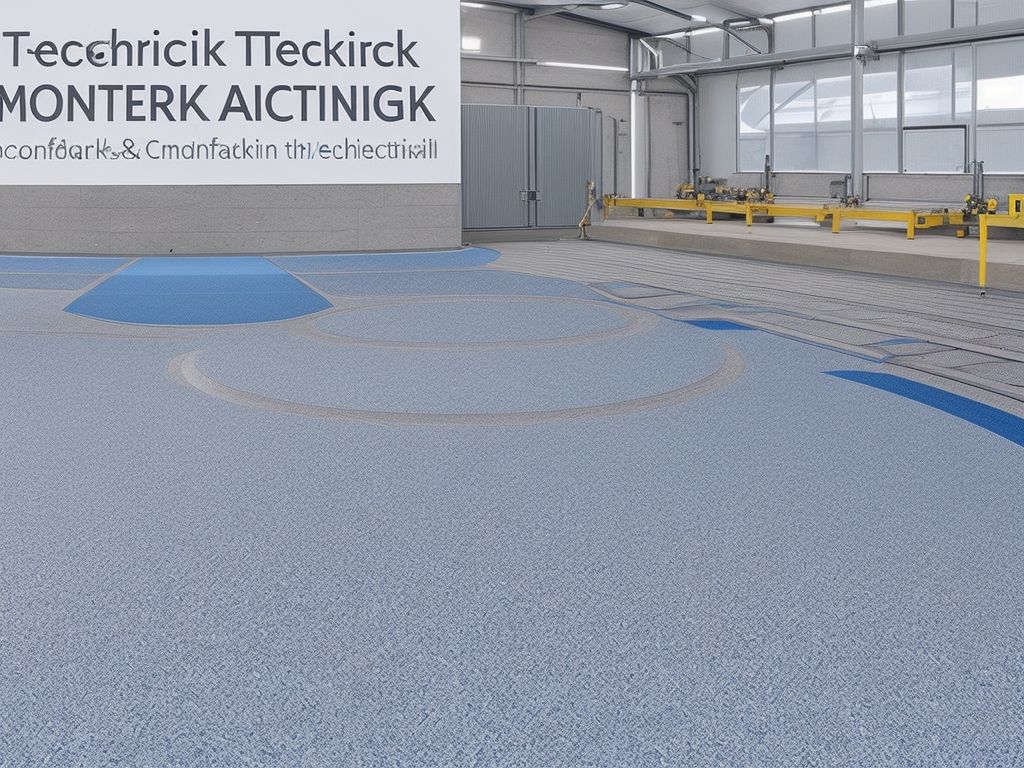
- Discover the American Sports Builders Association – Leading Experts in Sports Facility Construction

- Discover the Perfect Timing Clocks from Contarnex Europe Limited – English UK Language
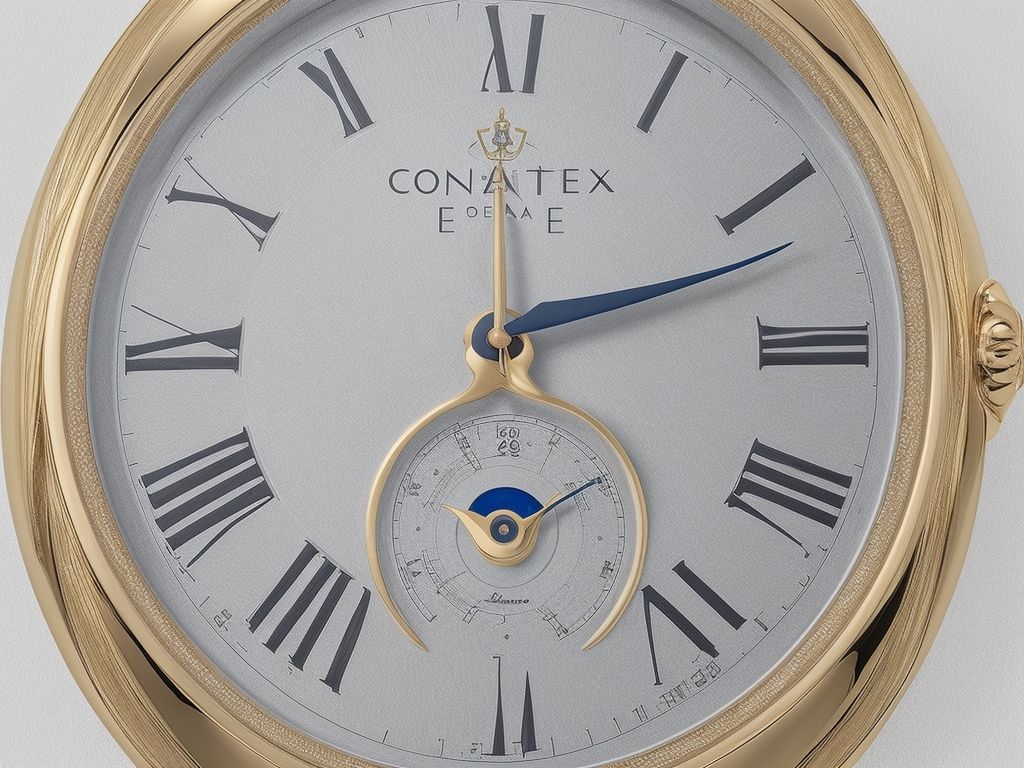
- En-Tout-Cas Sports Surfaces: Expert Track Construction & Equipment

- En-Tout-Cas Sports Surfaces: Track Construction & Equipment in EnglishUK

- Enhance Athletic Field Performance with Eagle Coatings UK Track Marking Paint

- Enhance Efficiency with Computomarx for Accurate Track Marking Calculations

- Enhance Performance with Conica Technik’s Conipur Track Surface – UK

- Enhance Sports Grounds with Top-Quality Eagle Coatings UK Track Marking Paint

- Enhance Your Track with Athletic Markings Limited’s Expert Track Marking Services

- Expert Guide to Fox Sports Surfaces: Construction Techniques and Pro Tips

- Expert Track Construction | Bernhard’s Sport Surfaces Limited | EnglishUK Language
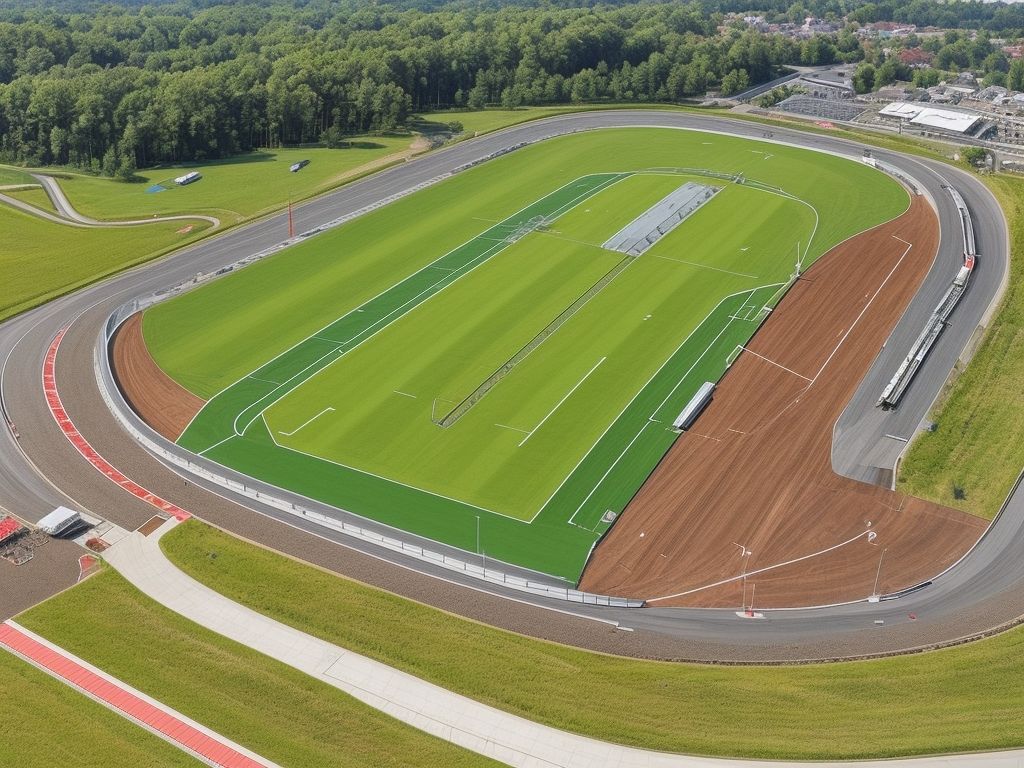
- Expert Track Construction Contractor – Fitzpatrick: Industry Leader in England

- Expert Track Construction Contractor – Fitzpatrick: Transforming Railways for Efficiency

- Expert Track Construction Contractor – H.E. Construction Services Ltd.

- Expert Track Construction Contractor: H.E. Construction Services Ltd.

- Fast Track Marketing Strategies to Boost Your Business – Must-Know Efficient Techniques

- Fast Track Marketing: Accelerating Success Through Strategic Tactics | EnglishUK

- Improve Timekeeping with Contarnex Europe Limited’s Timing Clocks – EnglishUK Language
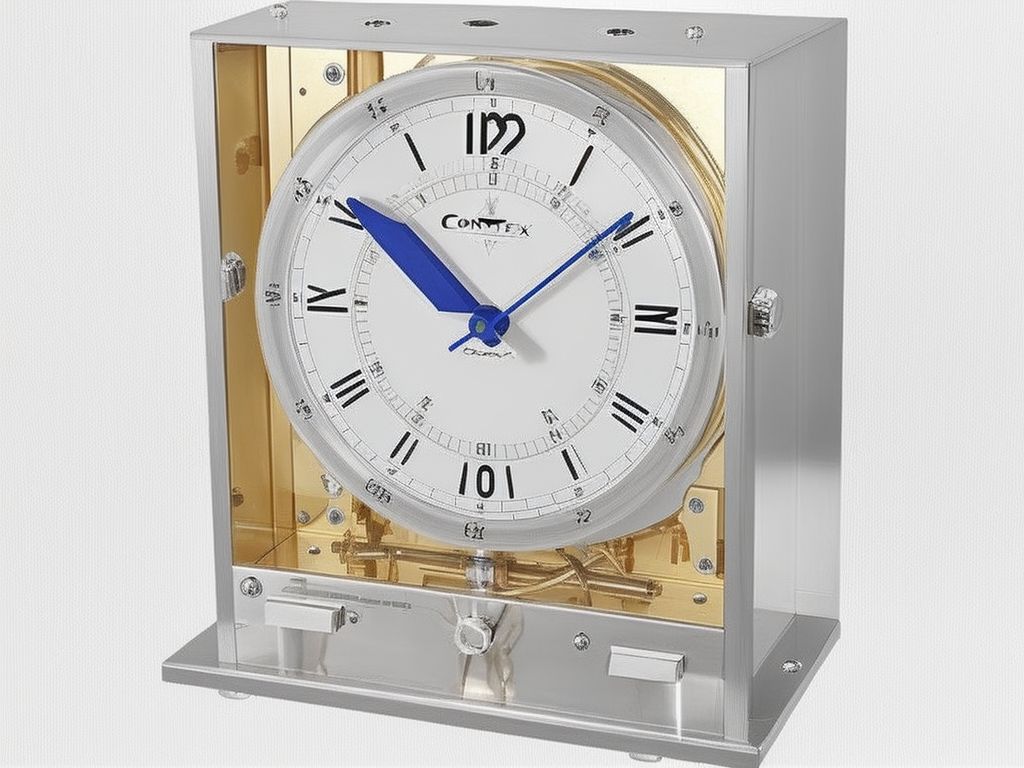
- Mastering Computomarx: Smarter Track Marking Calculations for Engineers | EnglishUK
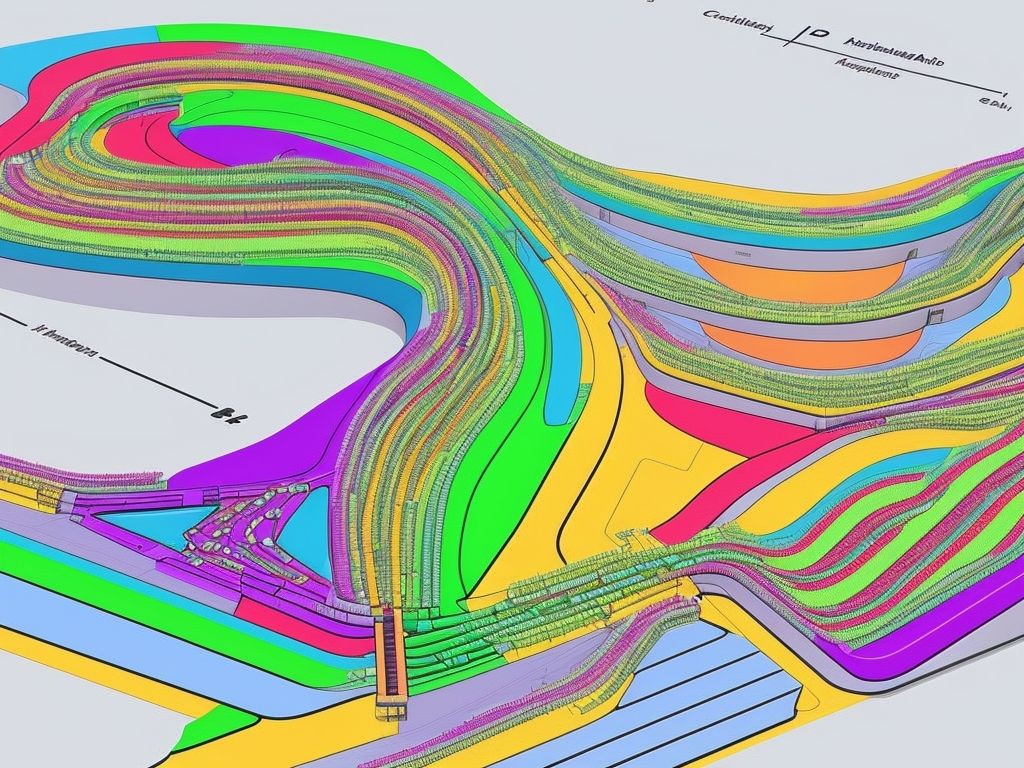
- Protect Your Sport Equipment with High-Quality Covers – Covers 4 Sport

- Protect Your Sports Equipment with High-Quality Covers | Covers 4 Sport UK

- The Ultimate Guide to Fox Sports Surfaces: Track Construction & Maintenance

- Track Construction Experts – Bernhard’s Sport Surfaces Limited
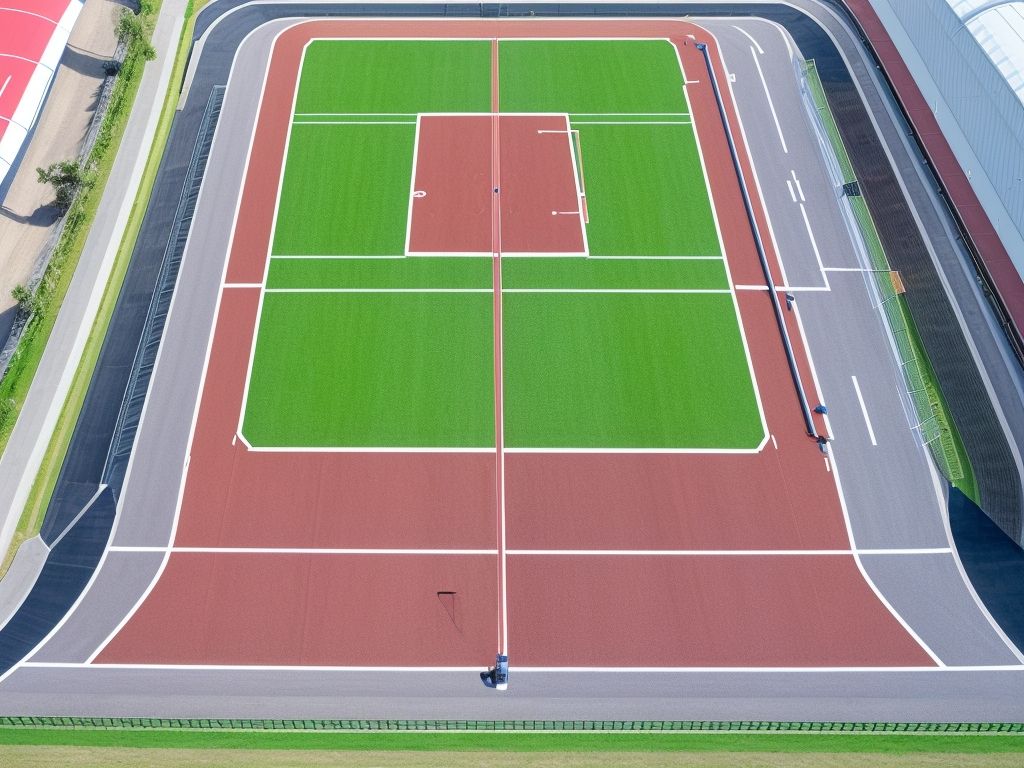
- Track Construction Services by Charles Lawrence Surfaces plc | UK’s Leading Provider

- Track Marking Services by Athletic Markings Limited – Improve Athletic Performance

- Transform Your Track Construction with Charles Lawrence Surfaces plc

